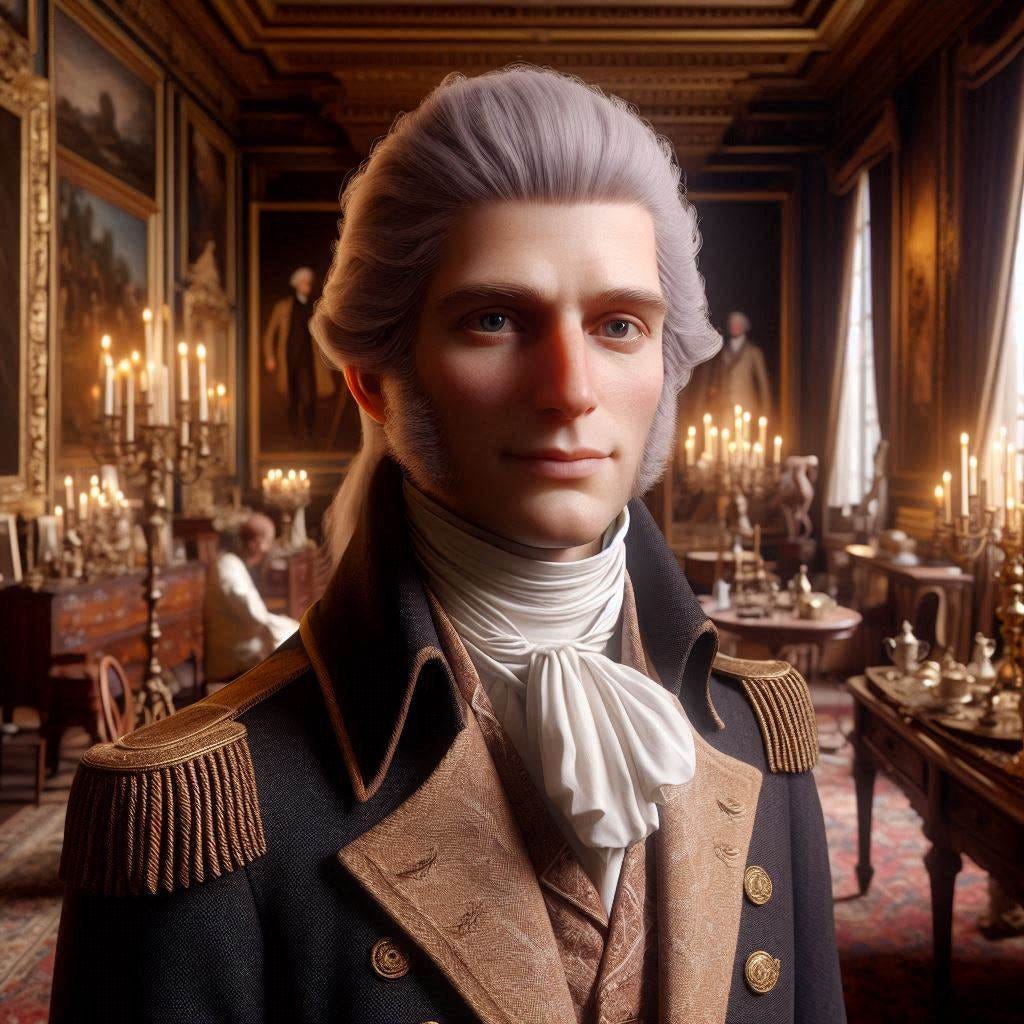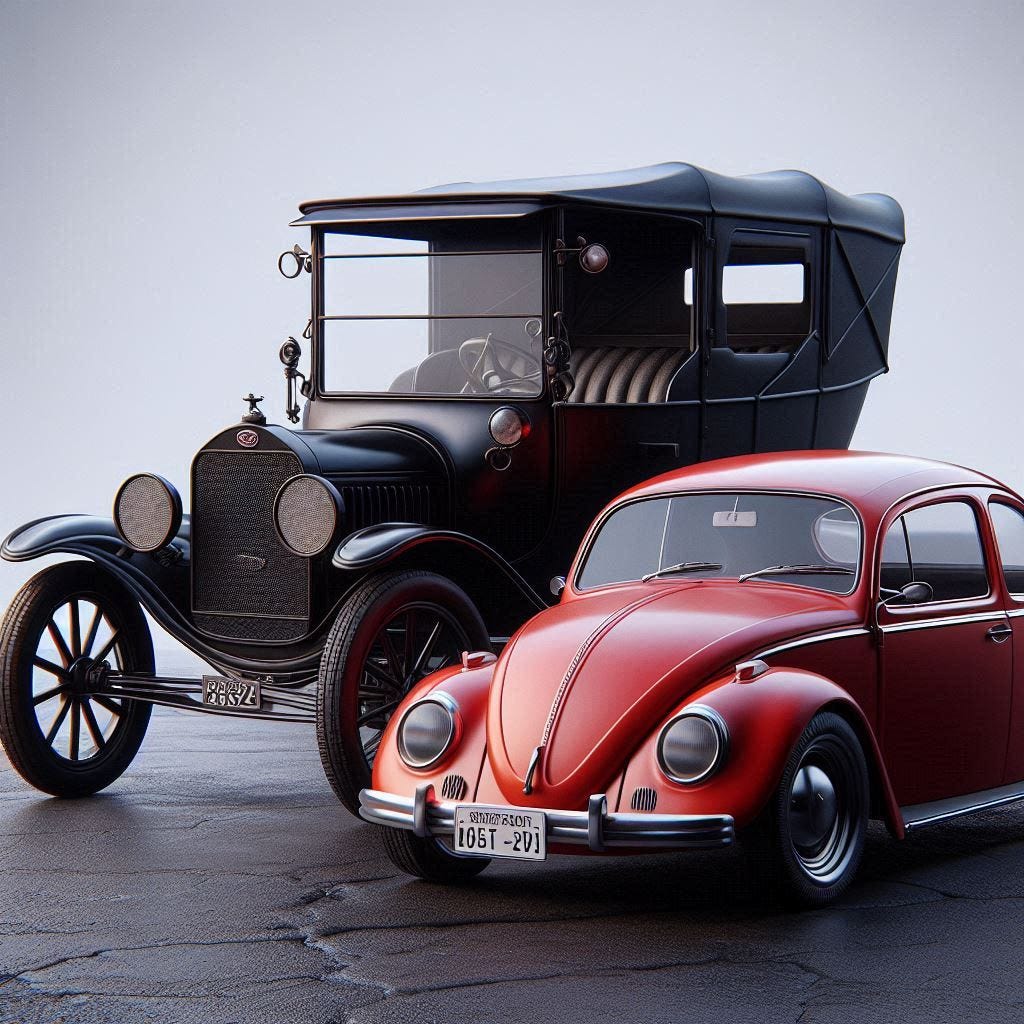The Mysteries of History (February 17 Edition)
Jefferson, Burr, and Hamilton; Volkswagon Beetle Overtakes the Model T
“Those who cannot remember the past are condemned to repeat it.” — Spanish-American philosopher George Santayana, 1905
1801 — Thomas Jefferson Squeezes Into the Presidency
image generated using Bing Image Creator
Thomas Jefferson certainly had the “street cred” and experience to be President: He had drafted the Declaration of Independence, been Minister to France, served as George Washington’s Secretary of State, and after that served as John Adams’ Vice President.
In those days, multiple people belonging to the same political party could run for President. All of the candidates were voted for as individuals rather than as a team. In other words, people did not vote for either Democrat-Republicans (yes, it was a combined party at the time) Jefferson and Burr nor did they vote for a pair of the three Federalists who threw their wigs into the ring, namely John Adams, Charles C. Pinckney, and John Jay. Instead, landed white men (the only people allowed to vote) selected one out of the whole field of aspirants, and the person who got the most votes became President, while the man (they were all men back then) with the second most votes became Vice President (even if these two were diametrically opposed in their political philosophy).
The vote ended in a tie between Jefferson and Burr, so the new President was chosen from these two by the House of Representatives, which was controlled by the Federalists. The influential Alexander Hamilton made sure Burr wasn’t selected as President — not out of any love for Jefferson, but because he despised Burr even more (Burr and Hamilton later fought a dual to the death; in Hamilton’s case, it was the last thing he ever did, because he fired into the air whereas Burr did not).
Questions: When and where did Burr and Hamilton fight a dual, and why? What repercussions were there for Burr killing Hamilton (if any)? What was Jefferson’s reaction to the dual and its outcome? Were duals common in those days? What was the origin of duals? Were they always fought with pistols? When did duals “die out” (no pun intended)? Have you seen the play “Hamilton”? If so, does it make you feel more sympathetic toward Hamilton or Burr, and why?
1972 — Volkswagen Beetle Overtakes the Ford Model T in All-Time Sales
image generated using Bing Image Creator
Ford’s Model T, which was in mass production from 1908 to 1927, sold more copies than any other automobile until this date in 1972, when Germany’s Volkswagen Beetle overtook it for top spot when the 15,007,034th “Bug” was produced.
As a side note, contrary to popular misconception, the Model T was available in red, green, blue, and grey — in its early years, that is, until 1914, when Black became the only option.
Although seen by many as a hippie’s mode of transportation or as a cute or funny type of car (such as its incarnation as “Herbie” in the comedic 1968 movie “The Love Bug”), the Volkswagen’s history belies those impressions: the small, inexpensive car designed for the masses (Volkswagen means “People’s Car”) was the brain child of homicidal maniac Adolf Hitler (1889-1945) and automotive engineer Ferdinand Porsche (1875-1951). Plans were made to manufacture the car sooner, but work didn’t begin on it in the Wolfsburg, Germany factory until 1938, and production did not seriously ramp up until after World War 2 was over, when Hitler was dead.
The last Volkswagen Beetle came off the assembly line in Mexico in mid-2003.
Questions: How did Henry Ford and Adolf Hitler view each other? Would you rather have a mint condition Model T or Volkswagen? Why? Have you ever owned a Ford? Have you ever owned a Volkswagen (whether a Beetle or not)? If both, which one did you like better?








